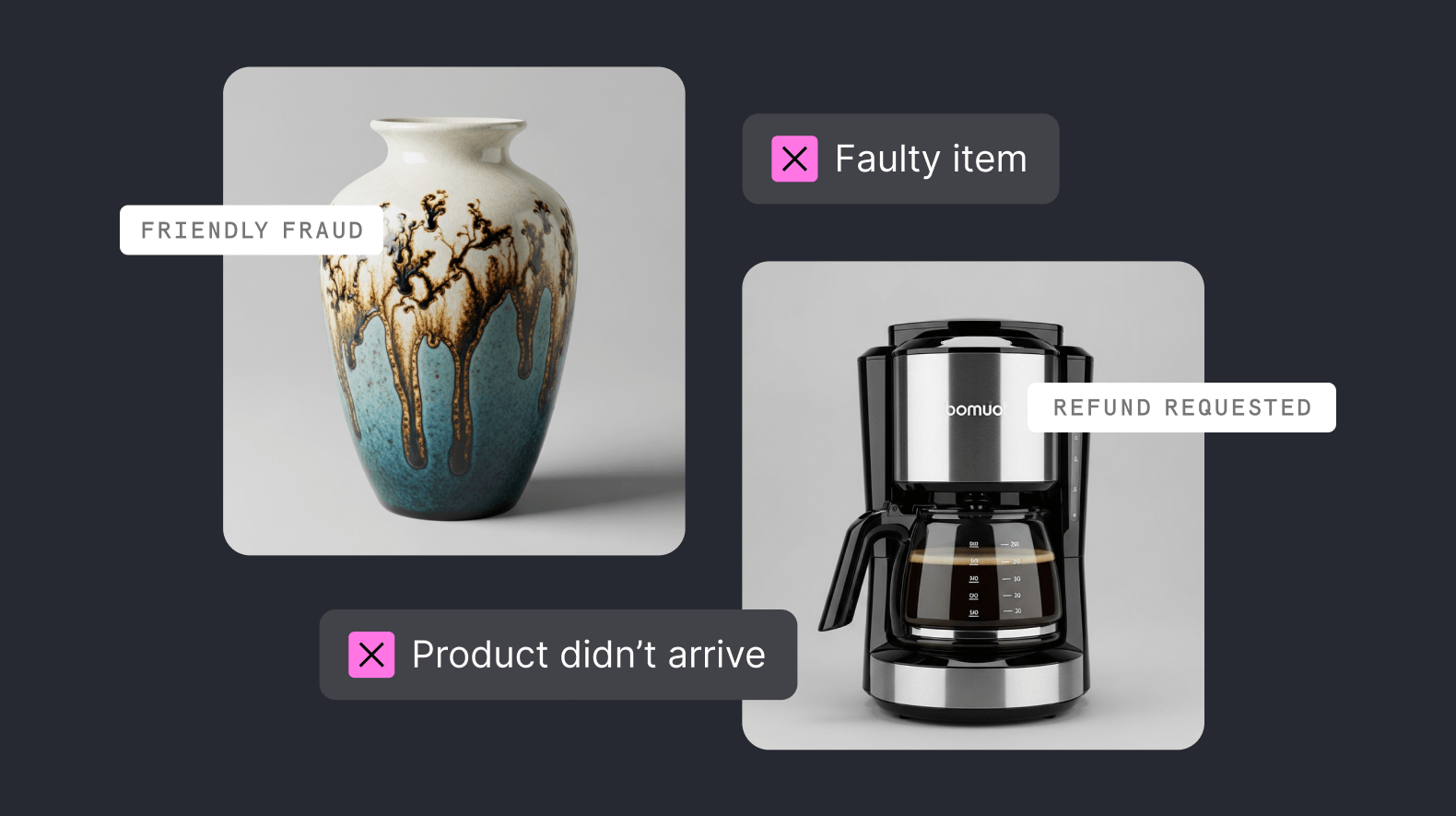Understanding the cost of taking payments is a key metric for any merchant. Yet, many merchants don't have a clear view of what interchange fees are or how much they cost. That makes it harder to manage costs more broadly, and can harm profit margins.
First of all, it’s worth knowing that if your payment services provider (PSP) charges you a “Merchant Discount Rate”, this refers to the fee for processing electronic card payments. Interchange fees make up the most significant portion of the Merchant Discount Rate.
What are interchange fees?
Interchange fees make up a portion of the transaction fees that merchants must pay each time they take a payment via credit or debit card. The acquirer pays this fee (via the scheme) to the card issuer.
How do interchange fees work?
Interchange fees are incurred every time a customer makes a transaction using their credit or debit card.
The issuer deducts the interchange fee from the transaction value sent to the acquiring bank. That's why most people understand the interchange fee as taking place between the issuer and acquirer. But the scheme involvement is critical, as the card scheme sets the interchange rates.
In the end, it's the merchant that foots the bill because the acquirer will pass on the costs of each transaction.
In a four-party model with transactions going through Visa or Mastercard, we have the customer, issuer, card scheme, acquirer, and merchant.
Let’s break down the interchange fee using an example of a $100 purchase.
Consumer perspective: $100 purchase example
When a customer makes a purchase for $100, this figure is deducted from their account. The customer may assume the $100 is transferred directly to the merchant.

But this is not the case in an online card transaction.
Merchant perspective: $100 purchase example
The acquirer facilitates the customer payment on behalf of the merchant. The acquirer charges a fee to the merchant known as the merchant discount fee (also known as the merchant discount rate).
Let's assume that the acquirer charges the merchant discount fee at a rate of 1.57% + $0.23. For the $100 transaction, the merchant discount fee comes to $1.80.
The merchant receives $98.20 out of the $100 purchase (deducting the merchant discount fee from the total).

Issuer perspective: $100 purchase example
The interchange fee rate is set by the card scheme. Let’s assume that, in this case, the interchange fee rate is 1.23% + $0.10.
Given the transaction value is $100, the interchange fee due is $1.33. The issuer must pass on the remaining transaction value of $98.67 ($100-$1.33) to the other participants (scheme, acquirer and merchant).
The issuer has “visibility” that $98.67 is heading towards the merchant but in reality the merchant receives $98.20. So there is $0.47 to be split between acquirer and card scheme.
Note: The issuer does not have visibility of the fees which the merchant must pay to the acquirer and scheme. However, we have included them for the purposes of education.
Scheme perspective: $100 purchase example
Let's assume the scheme fee rate is 0.15% + $0.10. That means the scheme assessment fee on a $100 transaction is $0.25.
As a reminder, the interchange fee is $1.33. Deduct the two fees from the transaction amount $100-($1.33+$0.25) so there is $98.42 to pass on to the acquirer. The merchant receives $98.20, so the acquirer earns $0.22 (equivalent to 0.22% on the example of a $100 transaction.)
Summary: $100 purchase example
The Merchant Discount Rate is: $1.80
The interchange fee is: $1.33
The scheme assessment fee is: $0.25
The acquirer receives: $0.22
The merchant receives: $98.20

In summary, for our example $100 purchase, the fee percentages are:

What affects interchange fees?
The interchange rate is set by the card scheme (for example, Mastercard or Visa).
The fee per transaction is calculated according to different structures which vary between card schemes. Each transaction type has a unique interchange fee attached to it, so it can be hard to estimate interchange fees in advance. Variables that affect the interchange fee include: card type, issuer registered location, and merchant’s registered business location.
Let’s look at the different elements that affect interchange rates:
Card schemes
Debit and credit card transactions are processed on the payment rails owned by card schemes (such as Mastercard).
Therefore, schemes manage the rules that allow consumers to make payments using their cards. The issuing bank and the acquiring bank must be members of the same network as the card in order for the payment to be made.
Card schemes charge different interchange fees. For example, the cost of a Mastercard payment isn't the same as a Visa one, even if it takes place in the same country with the same transaction value.
Card types
Credit card vs. debit card
Typically, interchange fees for credit cards are higher than for debit cards because it's easier and safer to approve debit card transactions. The reason: funds for debit card transactions come directly out of customers' linked bank accounts and it's easy to confirm that there are sufficient funds in those accounts to cover the costs of those transactions.
Consumer vs. commercial (corporate/business/purchasing)
Different fee caps apply to different types of cards, which vary according to regional regulations. For instance, consumer cards are more regulated and have a lower interchange fee rate than commercial card types.
Premium vs. standard cards
Issuing banks also offer premium or reward cards that include a variety of benefits such as cash back on purchases or frequent flier miles. The interchange fees are generally higher for reward cards as the increased fees pay for the extras offered by rewards programs. Reward cards can be particularly costly for merchants on tiered pricing plans.
Card payment method
Interchange fees vary depending on how the payment is taken. Online ecommerce card-not-present transactions tend to attract lower interchange fee rates than MOTO (mail order/telephone order). Card-present transaction interchange fee rates are lower than both of these.
Recurrent payments, such as merchant-initiated transactions (MIT) have lower interchange fees than customer-initiated transactions (CIT). This is because the merchant already has proof of authorization and authentication.
Merchant Category Code
Schemes use four-digit Merchant Category Codes (MCCs) to classify businesses based on the types of goods or services they sell. Some examples include: florists, restaurants, hardware stores, and online marketplaces.
Your MCC impacts interchange fees. Higher risk businesses, such as gaming, gambling, and crypto, typically have higher interchange fees. Merchants can find the current rates by checking the card schemes' websites or asking their payment services provider.
MCC is a particularly influential factor on interchange fees in the US and the Middle East.
Transaction security
The more secure transactions are, the lower the interchange fee rates. As fraud related to card-not-present transactions continues to increase, card associations have developed new tools to mimimize the risk of fraud, such as tokenization and cardholder authentication. In April 2022, schemes began charging lower rates to merchants using tokenization and higher rates to merchants not using it (in some regions). Other fraud prevention tools include an AVS check, where the customer’s billing address is compared to the address the issuer has on file.
- 3DS: When it comes to Strong Customer Authentication, including 3DS data in the payment flow can lower interchange rates in some regions.
- AVS and CVV: In the US, not submitting AVS and or CVV results in transaction downgrades. Downgrades have higher interchange fee rates, and can result in additional fees being levied. Downgrades also apply to transaction messages without the ZIP code.
- L1/L2/L3 data: Including more data in US transactions (such as Level 2 and Level 3 Data) will secure lower interchange fee rates. This is only applicable to certain US transaction types, such as commercial B2B card payments.
Location of financial institutions and merchants involved
Interchange fees depend on where the card is issued and where the merchant is registered. For instance, a Dutch cardholder flies to New York and buys Christmas presents on a Dutch-registered ecommerce site. The transaction is considered to be domestic, regardless of the cardholder’s physical location.
If the acquiring bank and the issuing bank are in different countries or jurisdictions, a higher interchange fee will reflect the additional complexity of the payment process.
A customer with a UK-issued card buying from a German-registered website is considered to initiate a cross-border transaction.
Where local laws allow, merchants may charge customers a fee to pay with certain cards – known as surcharging.
Card scheme region classifications
There’s a considerable difference between how different card schemes classify countries in various economic areas. So taking card payments in a country such as Georgia comes under different fee regions depending on whether it’s a Visa or Mastercard transaction. For Visa, Georgia is in the Central Europe, Middle East and Africa region. For Mastercard, it’s part of Europe.
How much are interchange fees in 2024?
Typically, US interchange fees are a percentage of the transaction value plus a fixed fee. Interchange fees in Europe are generally a percentage of the transaction value.
Generally, interchange fees account for between 0.1% and 3% of the total transaction value. This is a very wide range, and the exact figure may fall outside of it. The exact value depends on the countries that the relevant parties are registered in, MCC, and other factors.
Here is a representative range of values for interchange fees, by scheme and region:
Additionally, interchange fees are not static, and are periodically adjusted by card schemes to account for changes in technology costs, interest rates, market factors, and security needs.
Interchange fees vary depending on where the merchant- and issuing financial institution are registered. In the US, they are around 0.05%+0.21 USD to 3% of the transaction amount. In Europe, they are around 0.02 EUR or 0%-2.25% or up to 3% (depending on the type of card). The differences are broadly due to regulatory constrictions in each region.
Will interchange fees decrease?
In recent years, interchange fees have attracted more attention from regulators. Although regulation has kept interchange fees comparatively low in the UK and EEA, the US has seen a lot less.
In the US, the Durbin Amendment caps interchange fees (for large issuers) on debit and prepaid transactions at 0.05% of the transaction + $0.21. This does not apply to credit cards, although Senator Durbin has proposed new legislation which would affect credit card interchange fees, if enacted.
Since 2015, consumer card interchange fees in the European Economic Area (EEA) have been capped at 0.20% for debit cards and 0.30% for credit cards. Interchange fees can be lowered by local regulators; for example, for consumer domestic debit cards and prepaid cards in Ireland, the interchange fee is fixed at 0.10%, and in The Netherlands, the debit interchange fee is fixed at 0.02 EUR.
In addition, schemes have agreed to cap prices for interregional consumer card-not-present transactions at 1.15% for debit cards and 1.50% for credit cards. Interregional consumer card-present transaction interchange fees are also capped at 0.20% (debit) and 0.30% (credit). These are subject to time limitations.
Read more: UK regulator reviews interchange fees
How do merchants pay interchange fees?
Merchants pay interchange fees indirectly, by paying the Merchant Discount Rate (MDR) to their PSP on a regular billing cycle. The proportion of interchange fee which makes up the MDR is not always revealed. It depends on which pricing model has been agreed.
Below are the three main pricing models for the MDR:
Interchange ++
Interchange++ pricing provides more transparency than other pricing types as it shows a breakdown of charges. Interchange++ pricing comprises three elements: the interchange fee, the acquirer's fee, and the card scheme fees.
The acquirer fee can consist of a percentage fee, a fixed fee or a combination of the two. It’s more common for larger merchants to be billed this way.
Our research found 48% of merchants do not receive a detailed breakdown of their payment costs from their payment service providers. Switching to a provider that offers interchange++ pricing can help merchants solve this issue by giving them more transparency into the fees they pay per transaction type.
Interchange+
This is the interchange fee plus the acquirer fee (which incorporates any scheme fees). It’s not very common in the industry.
Blended pricing
Blended pricing models combine the various transaction costs to simplify merchant billing. The level of detail you’ll see depends on the PSP.
In general, most blended pricing involves some form of differentiation such as splitting domestic vs. international, or sometimes by card type (for example, consumer vs. commercial).
Interchange++ pricing vs. blended pricing
Blended or standard pricing bundles all the costs of processing transactions into a single fee; that's easier for merchants to understand and plan for because fewer variables are involved. However, blended pricing is less transparent than Interchange++, as the profit margin is not disclosed.
On the other hand, Interchange++ gives merchants more transparency over the individual costs wrapped up in the fees they pay. However, because Interchange++ is a passthrough model, it is subject to cost fluctuations. By comparison, blended pricing tends to remain stable throughout a contract cycle.
How does Checkout.com charge interchange fees?
Checkout.com uses the interchange++ pricing model, billing transactions with cost transparency.
Innovative merchants will use financial reporting with interchange++ to gain insights that inform an improved payment strategy. Our payment experts want to help you get the best performance from your business payments. That’s why we facilitate different kinds of financial reporting through our Dashboard and Reports API.
Visit our payment processing page or get in touch to learn more.






.png)

_conversion%20tactics.png)




%20(1).png)


